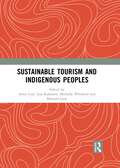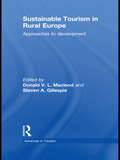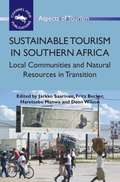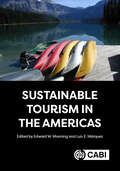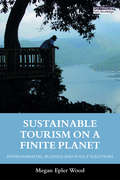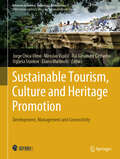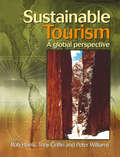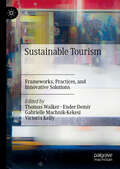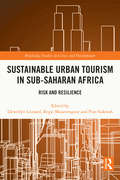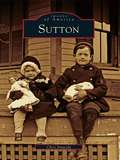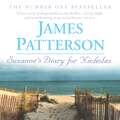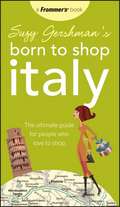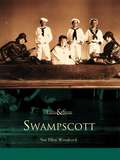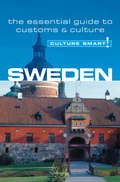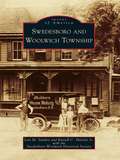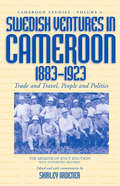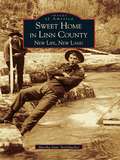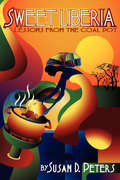- Table View
- List View
Sustainable Tourism and Indigenous Peoples
by Anna Carr, Lisa Ruhanen, Michelle Whitford and Bernard LaneThis book provides a comprehensive, detailed and insight rich review of both the positive (capacity building, cultural conservation and economic opportunities) and negative (commodification, cultural change and possible loss of ownership and control) aspects of tourism development in indigenous communities. The relationship between tourism and indigenous people provides the ultimate test of sustainable tourism as a concept for tourism management and cultural conservation. The chapters range geographically from Central and North America, through Africa, and Asia to Australia. Issues covered include governance and engagement, research, minority language issues, visitor codes of conduct, trail development, Indigenous product design, Indigenous urban festivals, Indigenous values and capitalism, gentrification, heritage interpretation, marketing, demand, world views and representation. This book was originally published as a special issue of the Journal of Sustainable Tourism.
Sustainable Tourism in Island Destinations (Tourism, Environment And Development Ser.)
by Rachel Dodds Sonya GraciMany of the world's islands are dependent on tourism as their main source of income. It is therefore imperative that these destinations are managed for long-term viability. The natural appeal of a destination is typically one of its main tourism related assets, yet the natural environment is also the feature most directly threatened by potential overexploitation. Sustainable Tourism in Island Destinations builds on existing literature in the subject by providing innovative discussions and practical management structures through the use of the authors' various island project work. An original feature is the focus on islands which are part of larger nations, rather than just on island sovereign states. Through an illustrated case study approach, the book focuses on the successes and challenges islands face in achieving sustainable tourism. The authors put forward innovative mechanisms such as multi-stakeholder partnerships and incentive-driven non-regulatory approaches as ways that the sustainability agenda can move forward in destinations that face specific challenges due to their geography and historic development. The case studies - from Canada, St Kitts, Honduras, China, Indonesia, Spain, Tanzania and Thailand - provide the foundation which suggests that alternative approaches to tourism development are possible if they retain sustainability as a priority.
Sustainable Tourism in Rural Europe: Approaches to Development (Advances in Tourism)
by Donald V. L. MacleodRural Europe is a highly developed tourism region, representing advanced tourism experience and supposed modern approaches to this industry. That said, it remains highly sensitive and fragile in terms of environmental, social, economic and cultural impacts. This volume focuses on rural Europe as a fascinating example of how tourism development impacts on the communities and the environment of rural regions and offers insights into how long term sustainability could be achieved in this specific region and correspondingly in other rural parts of the world. Sustainable Tourism in Rural Europe contains contributions from leading international scholars that review and analyse the concept and practice of sustainable tourism in this region through a multidisciplinary approach that embodies the view that sustainable tourism warrants a holistic approach in terms of its impacts and development potential. Divided into three sections: Key Themes and Issues; The State and Development; The Local Community and Development, this book addresses contentious and vital issues through theory, detailed research and case studies, offering real world approaches to sustainable development, showing problems including local politics which challenge abstract models. It introduces cutting edge research dealing with contemporary developments throughout Europe and consequential lessons/implications for other rural parts of the world. This volume will be of interest to students, researchers and academics in the areas of Tourism, Geography and Environmental Studies.
Sustainable Tourism in Southern Africa
by Jarkko Saarinen Fritz BeckerTourism has become a major economic agent and an important social and cultural element in contemporary southern Africa. As such, tourism has a wide range of impacts on environment, economy, cultures, and the everyday life of people. These processes have highlighted the role of sustainability in tourism development.This book represents an accessible examination of the connections between tourism and sustainability in southern Africa. It introduces connections between tourism, sustainability and development with a range of case studies and examples from the region. While the book and the individual chapters are emphasising the key role of tourism in the transition processes of local communities and environments, the social, cultural, economic and political contexts of tourism and communities are also highlighted.
Sustainable Tourism in the Americas
by Hebe Vessuri Mirtha Ampudia Sade Cameron Rafael Cartay Dalia J. Correa Leonardo M. Cuetara Yenis Cuetara Luis Ricardo Davila Roberto Frias Maria L. Izaguirre Bisleyvys Jimenez Glenn Mandziuk Ellen Walker Matthews Brian T. Mullis Patricio Tamariz DueñasSustainable Tourism in the Americas introduces the reader to the establishment of sustainable tourism across the region. It examines questions such as 'what is really meant by sustainable tourism?' Covered in eight chapters, the book discusses the evolution and application of the concept in the Americas from its origins as well as documenting established success stories of sustainable tourism policy and implementation from several countries in the Americas. The country and regional case studies critically examine what sustainable tourism means in their destination and address how in practice the concept of sustainability can be built to show results across different cultural and ecological situations ranging from local indigenous sites to urban environments. The book presents solid findings and includes content from: · research of academics and experiences of those working within the heritage setting; · recent criteria and indicators of sustainable tourism developed by GSTC and other standards, indicators and observatories work associated with UNWTO; · success stories of managing Western tourism destinations and applies relevant lessons to Americas; · Provides support to those who need to study and manage impacted destinations. It will be a valuable addition to the current lack of literature on this concept and of particular interest to those working within and studying tourism management and related themes.
Sustainable Tourism on a Finite Planet: Environmental, Business and Policy Solutions
by Megan Epler WoodThis book helps all those involved in international tourism develop the new skills, tools and investments required to protect irreplaceable global resources from the impacts of escalating tourism demand over the next 50 years. It documents how technology and the growing global middle class are driving a travel revolution which requires a new paradigm in managing tourism destinations. Travel and tourism supply chains and business models for hotels, tour operators, cruise lines, airlines and airports are analysed and environmental management techniques are proposed for each sector. A pragmatic set of solutions are offered to support the transition to lower impact tourism development worldwide. It recommends that decision makers assess the current and future value of natural, social, and cultural capital to guide investment in destinations and protect vital resources. Case studies illustrate why budgets to protect local destinations are consistently underestimated and offer guidance on new metrics. Innovative approaches are proposed to support the transition to green infrastructure, protect incomparable landscapes, and engage local people in the monitoring of vital indicators to protect local resources. It provides students, professionals, and policy makers with far-reaching recommendations for new educational programs, professional expertise, financing, and legal frameworks to lower tourism’s rapidly escalating carbon impacts and protect the health and well-being of local populations, ecosystems, cultures, and monuments worldwide.
Sustainable Tourism, Culture and Heritage Promotion: Development, Management and Connectivity (Advances in Science, Technology & Innovation)
by Uglješa Stankov Rui Alexandre Castanho Jorge Chica-Olmo Miroslav Vujičić Eliana MartinelliThis proceedings book explores future prospects of cultural, heritage, and religious tourism and how it can impact the socioeconomic complexity of a community and future developments. It includes chapters on contemporary digital age pilgrimage, digital interpretation as a management strategy, tourism in the era of digital communication, and the role of social media in conserving intangible cultural heritage. This book focuses on policies and mechanisms for heritage preservation. It includes cultural heritage tourism management, how the digitalization of data has impacted and further developed tourism, World Heritage classification in urban tourism destinations, cultural tourism products, and experiences. Moreover, it discusses the sustainable environment and geography in tourism. It covers topics such as ecotourism and rural sustainable development, heritage in socioeconomic sustainable development, and tourists' perceptions of tourism. Anotherpart of the book explores the social and economic impacts of tourism. It includes chapters on cycling tourism along the Elbe, residents' perceptions of the socioeconomic benefits of restaurants, architecture of historical mosques, tourism as a driver of soft power, tourists' perceptions of service quality, tourism during the Covid-19 pandemic, gastronomic narratives in tourism, and residents' perceptions of festivals. Also, it pinpoints the focus on user interaction-based development. It includes chapters on the role of community-led initiatives in heritage revitalization and addressing connectivity issues between historical and natural touristic heritage sites. These research papers provide valuable insights into the multidimensional nature of cultural sustainable tourism, covering a wide range of topics and offering diverse perspectives on its development, management, and impact.
Sustainable Tourism: A Global Perspective
by Peter Williams Rob Harris Tony GriffinSustainable Tourism is vital reading for anyone seeking to understand the complexities associated with sustainable tourism development, and how government and industry have responded to the challenges the concept poses.The major areas addressed in this edited volume are:* perspectives and issues associated with the concept of sustainable tourism development* accreditation, education and interpretation, including specific examples such as Green Globe 21, the European Blue Flag Campaign and the WWF's PAN Parks Programme* sustainable tourism case studies of tourist destination regions, natural areas and tourism enterprises drawn from Africa, Australia, the South Pacific, North America, South-east Asia and the CaribbeanAn impressive international editorial team has combined to present in this text not only a variety of perspectives on sustainable tourism development, but also significant insights into barriers, challenges and current industry and government responses to it in various parts of the globe. 'Sustainable Tourism' will be a welcome addition to the libraries of tourism industry professionals, individuals involved in the management of natural areas; tourism policy makers; tourism academics; and students with an interest in the future sustainability of tourism and the industry that supports it.
Sustainable Tourism: Frameworks, Practices, and Innovative Solutions
by Thomas Walker Victoria Kelly Ender Demir Gabrielle Machnik-KekesiThis edited volume aims to ignite an academic discussion regarding necessary, and urgent, adaption and mitigation strategies for the tourism industry. Now more than ever, there is a need for designing and implementing concrete strategies for a world in which tourism practices are sustainability-minded, not only to rescue this key industry from the devastating effects of the COVID-19 pandemic, but also to limit the effects that it has on pollution, climate change, and at-risk populations. Achieving this goal will require innovations that can help us synchronously adapt to committed change as well as shift our planning processes and alter our behaviours. Including contributions from international experts in the fields of tourism management, economics, political science, finance, business, and sustainability, this book provides much-needed research on sustainable tourism by evaluating current and future trends, global contributions, case studies and new research evaluating issuessuch as over-tourism and under-tourism, as well as the general effects that tourism have on a region’s economy, environment, culture, and society. In addition, it will explore how sustainable tourism can help alleviate, mitigate, or control these problems. This book aims to provide insight into how we can still enjoy and benefit from touristic travel while implementing appropriate strategies and adaptation plans in the areas of health, culture, the economy, and the environment and showcase investigations of alternative tourism frameworks and tourist perspectives. It will be of great interest to academic and practitioner communities in business and policy, as well as economics, tourism management, development studies, finance, cultural heritage management, policymaking and entrepreneurship.
Sustainable Transportation in Natural and Protected Areas (Routledge Studies in Transport, Environment and Development)
by Francesco OrsiProtected areas are at the centre of nature-based tourism, which is increasingly popular across the world. As visitor numbers increase, so does awareness of the harmful effects that large crowds may have on both natural resources and individuals’ recreational experience. This volume considers the challenge of transportation to and within natural and protected areas, the improvement of which has already been recognised as having great potential for mitigating the environmental impacts of ecotourism. While several books have focused considerable attention to the management of protected areas in general, little has been said about the specific issue of sustainable transport, an emerging trend that is already reshaping visitation patterns in natural settings. This book provides current knowledge on issues associated with the transportation of visitors in natural and protected areas, and a comprehensive overview of the technical and strategic options available to tackle these issues. It approaches the subject via three main topics: preferences, or the visitors' attitudes towards transportation; practices, where current approaches are assessed through examples and case-studies of successful experiences and methodologies from around the world; and policies, where suggestions and recommendations are put forward for both local scale strategies and broad-scale regulatory action with global relevance. Contributors include academics in the field of natural resource management and tourism, with extensive experience in protected area management and active partnerships with natural park administrations.
Sustainable Travel For Dummies
by Lee MylneHow to travel lightly across planet Earth Sustainable Travel For Dummies is for travelers of all ages and budgets who want to reduce their carbon footprints, respect and protect the planet, contribute to local economies, and incorporate conservation into their travel experiences. That’s you! This easy-to-read guide shows you what sustainable travel is, why it’s important, and how to do it—with no travel shaming. Award-winning travel journalist Lee Mylne brings a global perspective on fun ways to travel responsibly. A must-have resource for globetrotters and for those whose travels keep them close to home, this book covers alternative transportation, unique accommodations, fulfilling cultural experiences, everything else the eco-savvy traveler needs to know. Discover how to plan eco-friendly trips to destinations near and far Reduce your carbon footprint while still enjoying life-affirming experiences Learn about alternative methods of transportation and sustainable accommodations Gain cultural awareness and get fun ideas for making the most of your travel Sustainable Travel For Dummies is an inspiring read for travelers who are new to sustainable and ethical travel and seeking practical tips for eco-conscious wandering.
Sustainable Urban Tourism in Sub-Saharan Africa: Risk and Resilience (Routledge Studies in Cities and Development)
by Pius Siakwah Llewellyn Leonard Regis MusavenganeThis book investigates urban tourism development in Sub-Saharan Africa, highlighting the challenges and risks involved, but also showcasing the potential benefits. Whilst much is written on Africa’s rural environments, little has been written about the tourism potential of the vast natural, cultural and historical resources in the continent’s urban areas. Yet these opportunities also come with considerable environmental, social and political challenges. This book interrogates the interactions between urban risks, tourism and sustainable development in Sub-Saharan African urban spaces. It addresses the underlying issues of governance, power, ownership, collaboration, justice, community empowerment and policies that influence tourism decision-making at local, national and regional levels. Interrogating the intricate relationships between tourism stakeholders, this book ultimately reflects on how urban risk can be mitigated, and how sustainable urban tourism can be harnessed for development. The important insights in this book will be of interest to researchers and practitioners across Tourism, Geography, Urban Development, and African Studies.
Sustainable and Resilient Businesses in the Global Economy: 4th International Conference on Modern Trends in Business, Hospitality and Tourism, Cluj-Napoca, Romania, May 16–18, 2024 (Springer Proceedings in Business and Economics)
by Mark Anthony Camilleri Adina Letiția Negrușa Monica Maria CoroşThis book explores the latest trends, challenges, and opportunities shaping the business, hospitality, and tourism sectors, with a special focus on Eastern Europe. It presents a collection of thought-provoking papers from the 2024 Modern Trends in Business, Hospitality, and Tourism International Conference, held in Cluj-Napoca, Romania. Key topics include the evolution of global capital markets and investment strategies in the post-COVID-19 era, innovative and sustainable business models, alternative financing solutions for SMEs, corporate governance reforms, and the future of human capital leadership. Each chapter offers fresh perspectives on building resilient businesses in an increasingly interconnected global economy. Ideal for academics, researchers, industry experts, and practitioners, this book provides valuable insights and practical solutions for fostering sustainable growth and resilience in today’s dynamic business environment.
Sutherlin
by Douglas County Museum Tricia Dias Sutherlin 100 CommitteeOriginally called Camas Swale, Sutherlin was incorporated on June 24, 1911, and renamed for Fendel Sutherlin at the behest of his daughter, Anne Sutherlin Waite. What started as an agricultural community of orchard homesites later transitioned into a timber boomtown during World War II. Although the Sutherlin valley had its share of visionaries, most of its people were basic, hardworking folks who persevered despite the roadblocks in their way. They survived floods, fires, destruction of the timber industry by the spotted owl conflict, wholesale unemployment, and the 1989 shutdown of the city for lack of funds. Today's residents are also hardy people, even the newer senior citizens who, in great numbers, are making the town their retirement home.
Sutton
by Chris SinacolaSutton was born among fertile hilltops and well-watered valleys of the Nipmuc country, where, in the early 1700s, a group of London proprietors established a new foothold in America. In the wake of Indian wars, English farmers built a town on their guns, plows, and Congregational sensibilities, a place echoed today through the images in Sutton. No Massachusetts town sent more of its native sons to fight for independence, and Sutton secured that liberty through hard work. French Canadian workers built the mill villages of Manchaug and Wilkinsonville and turned out cloth, hats, and shuttles. Sutton raised prize-winning cattle and grew the Sutton Beauty apple. As the twentieth century brought growth, Sutton blended highways and subdivisions with eighteenth-century homes, farms, and a working blacksmith shop.
Suzanne's Diary for Nicholas
by James PattersonKatie Wilkinson has found the perfect man at last - but one day he disappears from her life, leaving behind only a diary for her to read. The diary was written by a new mother, as a keepsake for her baby son. In it she touchingly recounts the initial romance between herself and the child's father, and the unparalleled joy that motherhood has brought her. As Katie reads this moving account, it becomes clear that the lover who has left her is the same man as the husband and father in the diary. She reads on, filled with terror and hope as she struggles to understand what has happened - and whether her new love has a prayer of surviving.
Suzanne's Diary for Nicholas
by James PattersonBook editor Katie is in love with poet, Matt Harrison. He seems to share her feelings, but refuses to talk about his past. All she knows is that Matt was once married. One evening, he suddenly ends their relationship, leaving Katie devastated. A few days later, he sends her a notebook that he promises will explain everything. Katie opens the book to find it is the diary that Matt's wife, Suzanne, wrote for their baby son. It tells the story of her love for Matt and Nicholas, and reveals the tragedy that haunts Matt's life today. And Katie realises he needs her to understand his past if she is ever to be a part of his future.(P)2013 Headline Digital
Suzy Gershman's Born to Shop Italy: The Ultimate Guide for Travelers Who Love to Shop (Thirteenth Edition) (Born to Shop #25)
by Suzy Gershman<p>Suzy shops the world -- with dachshund Toffee in tow -- to find the world's best shopping buys, and passes her discoveries along to you! <p>This is the 24th year of this series, and with a new cover and interior design -- including Shop Talk industry gossip, Best Bets picks, Shopping Adventure travel tips, and more-- it has never looked better. Suzy even tags her maps with personalized "hand-written" notes, as if she were writing tips on a napkin for you. <p>"Shop and Save" has been Suzy's mantra lately: Suzy likes luxe but she likes bargains, too. She's packed this new edition with sales, outlets, best buys, and the best gifts for less than $10. <p>This guide covers the country from Naples and the Amalfi Coast to Rome to Florence to Venice, so you'll find everything from leather markets to flea markets to the best airport shopping to hotel shops and duty free deals -- all with Suzy's trademark wit and wisdom, plus hotel and dining recommendations.</p>
Swampscott (Then and Now)
by Sue Ellen WoodcockAs the gateway to the North Shore, Swampscott became one of the most popular summer resorts of the nineteenth and twentieth centuries. Beyond the grand hotels, however, was a town by the ocean, where some derived their income from the sea and others sought the spirit of entrepreneurship and invention. Swampscott was incorporated in 1852 after breaking away from the city of Lynn. Connecting the past and present through a variety of images, Then & Now: Swampscott takes a look at foundations laid by our forefathers, the people who shaped the town and its legends. Whether it is General Electric cofounder Elihu Thomson, Chicago Bears coach Dick Jauron, or the New Ocean House, the collection of images in Then & Now: Swampscott is sure to make you look at the town in a different light and remember those who made the town what it is today.
Sweden - Culture Smart!
by Charlotte DewittCulture Smart! provides essential information on attitudes, beliefs and behavior in different countries, ensuring that you arrive at your destination aware of basic manners, common courtesies, and sensitive issues. These concise guides tell you what to expect, how to behave, and how to establish a rapport with your hosts. This inside knowledge will enable you to steer clear of embarrassing gaffes and mistakes, feel confident in unfamiliar situations, and develop trust, friendships, and successful business relationships.Culture Smart! offers illuminating insights into the culture and society of a particular country. It will help you to turn your visit-whether on business or for pleasure-into a memorable and enriching experience. Contents include* customs, values, and traditions* historical, religious, and political background* life at home* leisure, social, and cultural life* eating and drinking* do's, don'ts, and taboos* business practices* communication, spoken and unspoken"Culture Smart has come to the rescue of hapless travellers." Sunday Times Travel"... the perfect introduction to the weird, wonderful and downright odd quirks and customs of various countries." Global Travel"...full of fascinating-as well as common-sense-tips to help you avoid embarrassing faux pas." Observer"...as useful as they are entertaining." Easyjet Magazine"...offer glimpses into the psyche of a faraway world." New York Times
Swedesboro and Woolwich Township
by Swedesboro-Woolwich Historical Society Russell C. Shiveler Jr. Lois M. StanleyIn the mid-1600s, a group of Swedes from Delaware and Pennsylvania sailed up the Raccoon Creek and began a settlement on prime farmland in southern New Jersey. Initially known as Raccoon, the town at the center of Woolwich Township was renamed Swedesborough in 1765. Transportation links to Swedesboro by creek, highway, and railroad made the town an attractive location for mills, shops, and farms. Today many residents are descended from the area's original Swedish settlers. Swedesboro and Woolwich Township presents a diverse collection of photographs from the 1800s to the 1970s, illustrating daily life for residents of the community.
Swedish Ventures in Cameroon, 1883-1923: Trade and Travel, People and Politics (Cameroon Studies #4)
by Shirley ArdenerThe 1880s were a critical time in Cameroon. A German warship arrived in the Douala estuary and proclaimed Cameroon a protectorate. At that time, two Swedes, Knutson and Waldau, were living on the upper slopes of the Cameroon Mountain. Very little is known about their activities. One, Knutson, wrote a long memoir of his time in Cameroon (1883-1895) which is published here for the first time. It gives fascinating insights into everyday life in Cameroon and into the multifaceted relationships among the various Europeans, and between them and the Africans, at the end of the 19th century; we learn about the Swedes' quarrels first with the Germans and later with the British, over land purchases, thus revealing the origins of long on-going disputes over Bakweri lands. We are given vivid descriptions of Bakweri notables and their, and the Europeans', cultural practices, a rare eye-witness account of the sasswood witchcraft ordeal, and learn about Knutson's friendships with slaves. Together with appended contemporary correspondence, legal opinions, and early (translated) texts, this memoir must be considered as a unique and invaluable primary source for the pre-colonial history of Cameroon.
Sweet Home in Linn County: New Life, New Land
by Martha Jane SteinbacherFirst platted in the 1850s, and as legend tells it, named from an exclamation of settler William Clark waking to discover "what a Home, Sweet Home," this future lumber boom-town began as a stage stop on the road across the Cascade Mountains. With the arrival of the first freight train on April 1, 1932, Sweet Home became one of Linn County's most important industrialized towns. Crawfordsville, Holley, Fern Ridge, Liberty, Pleasant Valley, Foster, and Cascadia were all settled about the same time and became a part of greater Sweet Home. Following the decline of lumber interests, Sweet Home became the gateway to recreation and industrial activities of Eastern Linn County with the construction of the Green Peter Dam in 1962-63. Here is the story of Sweet Home and its surrounding communities, showcased in some 200 vintage images. These photos illustrate early pioneer stories, like that of Letty Sankey, the first female mayor, whose name was placed on the ballot by her father as a joke. They also show the development of the area through the hotels, mining and logging industries, schools, churches, and shared community activities.
Sweet Honey, Bitter Lemons: Travels in Sicily on a Vespa
by Matthew FortReplete with authentic Siclian recipes culled directly from the out of the way island stoves and cafe kitchens that cook them, Sweet Honey, Bitter Lemons presents a travelogue for seasoned travelers, and lovers of all things Italian. At the age of twenty-six Matthew Fort first visited the island of Sicily. He and his brother arrived in 1973 expecting sun, sea and good food, but they were totally unprepared for the lifelong effect of this most extraordinary place. Thirty years later and a bit wiser—but no less hungry—Matthew finally returns. Travelling around the island on his scooter, Monica, he samples exquisite antipasti in rundown villages and delicate pastries in towns tumbling down vertical hillsides, and goes fishing for anchovies underneath a sky scattered with stars. Once again this enigmatic island casts its spell as Matthew rediscovers its beauty, the intensity of its flavors, and finds himself digging into the darkness of Sicily's past as well as some mysteries of his own.
Sweet Liberia, Lessons from the Coal Pot
by Susan D. PetersSweet Liberia, Lessons from the Coal Pot is a delightful, painfully honest memoir that chronicles the thick slice of humanity sandwiched between Liberia's April 12, 1980 coup and the Civil War in 1989. Like many others who embraced Black Pride, Afros, African clothing and names in the 70's, Susan and thousands more took it one step further and immigrated to Mother Africa. This touching memoir is set against the author's personal growth, her cultural struggles, and her triumphs, and is an informative, personally revealing, and often-comical account of her family's eleven-year journey immersed in the rich culture of Liberia, West Africa. "Many have wondered what it would be like to pack up our things and move to a new country, but none of us have imagined having to flee our new homeland with our children and barely more than the clothes on our back. Yet, Susan Peters managed to do just that while maintaining her faith which would eventually help her rebuild her life and uplift her heart and soul. This book is a wonderful and eye-opening experience that shouldn't be missed!"---Naleighna Kai, National Best-selling author of Speak It into Existence.
